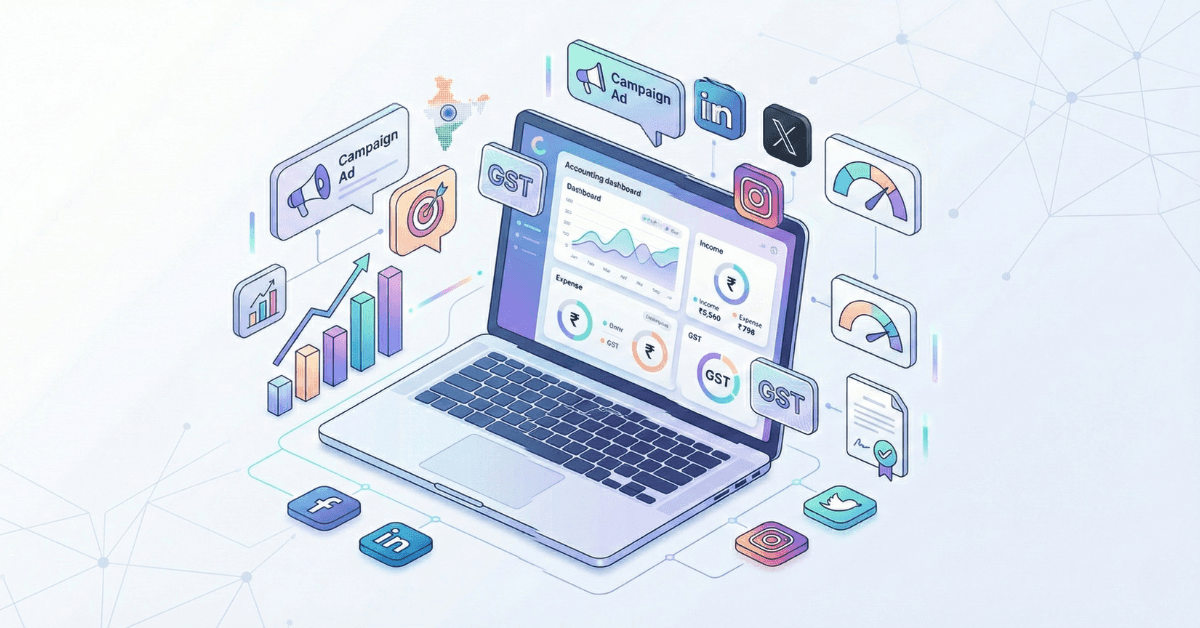
Let’s be real—freelancing in India is all about juggling: juggling deadlines, client calls, projects, and, of course, getting paid on time. If you’ve ever sat refreshing your bank account wondering, “When is this payment finally coming through?”, trust us, you’re not alone.
Managing invoices and payments can be the most stressful part of freelancing, but here’s the good news—it doesn’t have to be. With the right hacks, tools, and mindset, you can go from “When will they pay me?” to “Wow, my payments are already sorted!”
Let’s break it down and help you become the freelancer who manages invoicing and payments like a pro.
7 Steps of How Can Freelancers Manage Invoices and Payments
Step 1: Choose the Right Tool to Manage Invoices
You can’t rely on Google Sheets or PDFs forever—freelancers need accounting software that’s designed for you.
Why?
Professional Invoices: Tools let you create branded invoices with GST compliance (perfect for freelancers).
Quick Payment Options: Add UPI or QR codes to your invoices so clients can pay you instantly—no excuses.
Real-Time Tracking: Know which invoices are paid, pending, or overdue at a glance.
Step 2: Make Payments Easy for Clients
If your client has to search for your bank details every time they pay you, guess what? That delay is on you. Make it ridiculously easy for clients to pay you:
Include Payment Links: Add UPI, Paytm, or QR code payment options directly in your invoice.
Multiple Modes: Provide clients with options—UPI, net banking, or wallets. Clients love flexibility!
Politely Remind Them: Sometimes, all it takes is a polite WhatsApp or email reminder.
Step 3: Automate Payment Reminders
Following up on unpaid invoices is awkward. But you don’t have to do it manually anymore. Here’s how:
WhatsApp Follow-Ups: Automatically send reminders to clients without sounding desperate.
Due-Date Alerts: Get notified before a payment is overdue so you’re always in the loop.
Step 4: Stay Organized (Because Chaos Doesn’t Pay)
Freelancers who manage their finances well always get paid faster. Keep your invoicing and payments neat with these tips:
Use a Dashboard: Tools offer a dashboard where you can track all invoices in one place.
Separate Business Accounts: Don’t mix your chai expenses with client payments. Open a dedicated account for freelancing.
Update Your Records Weekly: Set aside 10 minutes every Friday to reconcile your payments.
Step 5: Always Have Clear Payment Terms
If you’re shy about setting payment terms upfront, you’re leaving money on the table. Here’s what every freelancer should include in their invoice terms:
Payment Deadline: “Due within 7 days of invoice receipt” works best for most clients.
Late Fee: Add a small penalty for delayed payments (e.g., ₹500 after 15 days).
Advance Payments: For big projects, always request 50% upfront.
Step 6: Build a Payment-Friendly Reputation
This one’s underrated but works like magic. When clients know you’re professional about payments, they’re more likely to pay on time. Here’s how to build that reputation:
Always send invoices promptly (no delays on your end).
Use polite yet firm language in your reminders.
Deliver high-quality work—on time. Happy clients = quicker payments.
Step 7: Invest in the Right Tech
Freelancing in 2025 isn’t just about talent; it’s about tools. Software like hisabkitab makes invoicing, payments, and follow-ups so seamless, that you’ll wonder why you didn’t start sooner.
With features like QR code payments, GST-ready invoices, and real-time tracking, it’s built specifically for freelancers who want to work smart, not hard.
Final Thoughts
Freelancing is about freedom, but true freedom comes when your finances are in control. Managing invoices and payments effectively isn’t just about tools—it’s about creating a system that works for you.
So, whether you’re designing logos, writing blogs, or editing reels, make sure your invoicing game is as strong as your talent. With the right mindset and tools like hisabkitab, you’ll not only thrive—you’ll redefine what it means to freelance smart in India.
Now go ahead, send that invoice, and let the payments roll in!
Continue Reading




